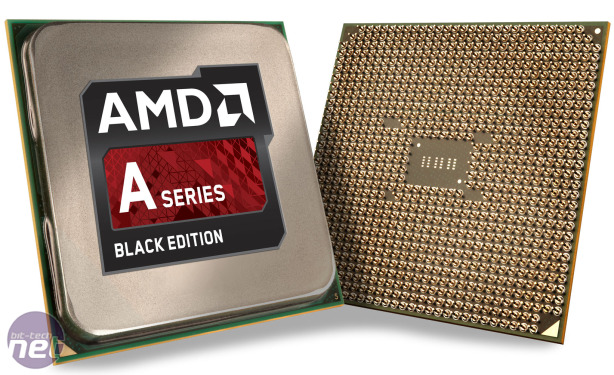
Conclusion
As ever, there are a number of conclusions that can be drawn when it comes to AMD's latest APUs. Firstly, while our testing shows that Kaveri's instructions per clock and performance per watt are definitely improved over Richland, the lower clock speed and TDP rating mean that the A10-7850K offers little in the way of x86 improvements over the A10-6800K. We did occasionally see large improvements (wPrime), but these are likely to be limited, and overall CPU performance is the same or only a little bit better. As such, Intel is still the victor here, often by a large margin, so if hefty CPU tasks are a priority for you (e.g. high resolution and complex image editing, video encoding, lots of file compression, etc.), you'll want an Intel CPU powering your rig. Even if your budget is constrained, a £90 Core i3 processor will offer you much more than the £125 A10-7850K.On the flipside, the GCN GPU in the A10-7850K is without doubt the best integrated GPU available for socketed processors. It's therefore a fantastic choice for a budget gaming PC that's still a capable all rounder, as its CPU performance is still appropriate for this segment of the market. As we said, Intel is better in this regard, but for general office applications, basic image editing and surfing the net (which covers a significant amount of users), the differences will be all but meaningless.
With its increased performance and lower power draw, as well as its use of AMD's latest architecture alongside features such as Mantle, TrueAudio and HSA, the A10-7850K also does enough to justify its price premium over the A10-6800K. We'd still prefer it to be a bit cheaper, but even so it displaces the A10-6800K as the APU of choice for such a build. Yes, you'll still need to make significant detail sacrifices to attain 30fps in the latest games at 1080p, but provided you pair it with a couple of 4GB 2,133MHz memory modules (which thankfully now only command a minuscule premium over 1,600MHz flavours), you'll have a nippy little budget gaming rig on your hands.
One of the biggest benefits of such a system would be the reduced power consumption, noise output and size requirements compared to using a discrete GPU. You could opt for a Core i3 processor with a cheap discrete card, but you'd lose these benefits. We're hopeful that motherboard manufacturers will cotton on to this and focus development on small form factors for the FM2+ platform, which is all about doing more with less. Nevertheless, we should still highlight that if you're going to be buying a discrete GPU of any real power, a cheaper Core i3 CPU would be a better bet, as you'd be negating any benefits of Kaveri's onboard GPU (and HSA) anyway.
Turning now to the A10-7700K, it's frankly an APU that straddles a very odd position in the market. The A8-7600 will almost certainly launch at a much more attractive sub-£100 price point, but it offers much the same performance as the A10-7700K in every test and has a lower 65W TDP rating. It's also optimised to run at 45W, so you can run it even quieter, if not silently.
Of course, you can overclock the A10-7700K to impressive levels, but honestly we're not sure why you would. If it's in pursuit of CPU performance, you might as well just buy a cheaper, faster and more efficient Core i3 CPU. If you're more interested in graphics performance, the A10-7850K with its two extra compute units will be worth the extra £15, especially in the long run. As such, we can't really see a situation where we'd recommend an A10-7700K over either the flagship Kaveri chip or the A8-7600, which is ideal for an all-purpose and discrete media centre build – we're now a little clearer as to why AMD initially sent us the A8-7600 to test with, as Kaveri's benefits are certainly clearer at lower TDPs.
One final word that we feel bears mentioning: HSA, OpenCL 2.0 and even GPU accelerated programs in general are still in their infancy (not to mention TrueAudio and Mantle). AMD is betting on a lot of things coming together in the coming years, particularly when it comes to accelerated parallel processing. If they do, the relevance and appeal of AMD's APUs could expand greatly, but for now they remain suitable choices for numerous applications in the entry level market.
AMD A10-7850K Score

AMD A10-7700K Score

AMD A10-7700K Score
-
Speed35 / 50
-
Features15 / 15
-
Value25 / 35


MSI MPG Velox 100R Chassis Review
October 14 2021 | 15:04










Want to comment? Please log in.